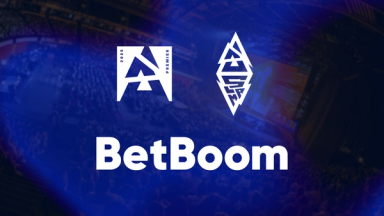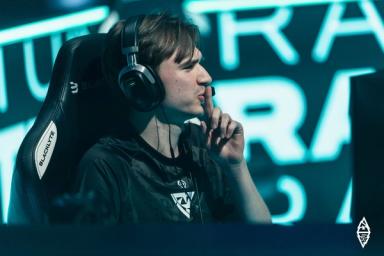The meta heroes of BLAST Slam II


BLAST Slam II has concluded with Tundra Esports taking a clean sweep against Gaimin Gladiators.
If you're curious about the meta heroes of the tournament and their performance statistics, we've got you covered. This article dives into the most impactful heroes of BLAST Slam II. Without further ado, let's get started.
Alchemist remains the most contested meta-hero
Alchemist has been a dominant meta-hero in recent tournaments. This trend shows no signs of fading. At our second tournament, he remains one of the most contested heroes.
 Players are still waiting for a nerf on Alchemist.
Players are still waiting for a nerf on Alchemist.In BLAST Slam II, Alchemist was contested in every match, reaching a 100% contest rate. However, he only got through in two matches, where he recorded a 50% win rate.
Despite the tournament being played on the same patch as our previous tournament, BLAST Slam I, another popular hero from the prior event—Dragon Knight—saw a much lower contest rate of 48.84%.
He was only picked in nine matches and recorded a 44.44% win rate.
Magnus and Bristleback are becoming the meta
If one of the strongest heroes in this meta didn’t even have a 50% contest rate in the tournament, which heroes are pro players favouring in this patch? The answer is simple – flex picks.
In recent months, Magnus has emerged as a top choice among players. At the tournament, he was one of the most contested heroes, boasting an 81.40% contest rate across 35 matches.
 Behold the horn of Magnus.
Behold the horn of Magnus.This popularity is largely due to his versatility—Magnus can be played in all three core roles: offlane, midlane, or even as a safelane carry.
His ability to reposition opponents with Skewer and land game-winning Reverse Polarities in late-game fights makes him an invaluable asset at the highest levels of play.
Additionally, Magnus is a Universal hero, which allows him to scale exceptionally well as the game progresses, further cementing his viability in competitive play.
He was only let through in eight matches but had an impressive 87.50% win rate.
Another hero that's unsurprisingly becoming meta is Bristleback. While Mag offers the invaluable asset of repositioning the opponents Bristleback is more straightforward, literally!
He can be either played as a safelaner or an offlaner. This is because his facet, Snot Rocket can be a mess for his opponents to deal with.
When players choose this facet, BB's Viscous Nasal Goo gains armour reduction.
Armour reduction gives a huge advantage in the highest level of play, allowing players to easily dictate the tempo of the match.
At the tournament, he had a 60% win rate in 20 matches, where he got through. He was contested in 39 matches, having a 90.70% contest rate.
Lycan and Dawnbreaker could be the meta offlaners
Players have recently discovered Lycan's potential, and over the past few months, he has steadily gained popularity as an offlaner.
At BLAST Slam II, we can see how top-tier players utilise him at the highest level of play. With the Alpha Wolves facet, Lycan can easily tear down the backline and eliminate squishy supports at any stage of the game using his Wolves and Howl.
 The wolf is at your door.
The wolf is at your door.His Wolves have evasion, can root enemies, and provide scouting when Summon Wolves is maxed—an undeniably powerful ability.
Lycan was contested in 21 matches, boasting a 48.84% contest rate in the tournament. He was only allowed through in six matches, but maintained a solid 60% win rate.
Another hero who made a strong impact in the offlane was Dawnbreaker. Both of her facets proved tremendously useful.
Nevertheless, it was her global ultimate, Solar Guardian that allow her to join skirmishes anywhere on the map and the accompanying heals that made her irreplaceable in the current meta.
 Valora, the Dawnbreaker.
Valora, the Dawnbreaker.Not to mention, she can easily pressure and displace the opposing safelaner during the laning stage.
She had a 72.09% contest rate across 31 matches in the tournament. However, she was only allowed through in eight matches, where she recorded a 37.50% win rate.
Beastmaster had the same contest rate but was picked in more matches compared to Dawnbreaker. He appeared in 15 games and achieved a 46.67% win rate.
Phantom Assassin is a meta-hero again
It has been a while since we've seen Phantom Assassin at the highest level of play in Dota 2. However, in this meta, she could make a more frequent appearance thanks to her Methodical facet.
This facet guarantees a critical strike every six hits, making PA one of the most contested safelaners at BLAST Slam II.
 One of the rarest and most sought after PA skins.
One of the rarest and most sought after PA skins. She had a 58.14% contest rate across 25 matches, was picked in 13 games, and secured a 61.54% win rate.
Another hero that shares the same contest rate with PA is Morphling. However, he had a much lower win rate with 40.00% at 10 matches.
Interesting Heroes at BLAST Slam II
BLAST Slam II also featured some interesting hero picks, with one of the most notable being Abaddon. Players have been experimenting with him in different roles in recent weeks.
 Abaddon will make you want to abandon the game.
Abaddon will make you want to abandon the game.At BLAST Slam II, he was used as a flex pick between the safelane and offlane, often favouring the latter. His facet, Mephitic Shroud, makes him an ideal pick for this role, as it absorbs and reflects incoming damage.
He had a 34.88% contest rate across 15 matches and secured a 60% win rate in the 10 games where he was picked.
Another highly favoured hero at the highest level of play is Bounty Hunter. He was the only support with a 90.70% contest rate in the tournament.
This is likely due to BH providing the most valuable asset in competitive play—vision. At the tournament, Bounty Hunter was only allowed through in 13 matches but still received a 53.85% win rate.
Chen is another support hero that pro players often find indispensable. At BLAST Slam II, he had a 39.53% contest rate in 17 matches. However, Chen achieved a 100% win rate in the five matches where he got through.
The Supports
Nyx Assassin, Clockwerk, and Phoenix were among the most popular supports at the tournament. Nyx, in particular, was a stable position 4 pick for many teams.
 Nyx is one of the most hated support heroes in Dota 2.
Nyx is one of the most hated support heroes in Dota 2.As a support, he excels at scouting with his unobstructed pathing. He can break smoke ganks with Vendetta.
Thanks to his innate ability, Nyxth Sense, he can detect invisible heroes around him on the map—an advantage many teams found invaluable.
Nyx had an 86.05% contest rate across 37 matches. He was only allowed through in six games but maintained a 50% win rate.
Another invaluable support in the current meta is Phoenix. He deals significant damage during the laning stage, helping secure the lane for his core.
This damage also scales well as the game progresses, and Phoenix provides crucial healing for his team. A support hero who can both deal sufficient damage and sustain allies is irreplaceable in Dota 2.
At the tournament, Phoenix had an 88.37% contest rate across 38 matches. In the 14 games where he was picked, he achieved a 50% win rate.
 Clockwerk is one of the best supports in the current meta.
Clockwerk is one of the best supports in the current meta.Clockwerk has also been a stable support in recent tournaments, and his relevance does not seem to be fading anytime soon. His ability to initiate, control fights, and provide vision is impeccable.
At BLAST Slam II, Clockwerk was contested in 33 matches, recording a 76.74% contest rate. In the 19 games where he was picked, he secured a 57.89% win rate.
That’s about it folks. These were the meta-heroes prevalent in Patch 7.37e. We hope you enjoyed watching BLAST Slan II as much as we did. Until next time!





 Tundra Esports
Tundra Esports
 MOUZ
MOUZ
 Team Yandex
Team Yandex




